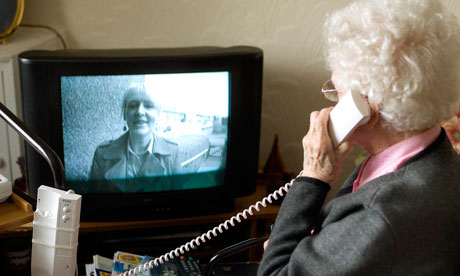
The NHS is facing a £30bn hole in its budget by 2020 and Clare Gerada, chair of the Council of the Royal College of GPs has said that we are currently short of 8,000 GPs, and by 2021 we shall need an additional 16,000.
It's obvious that the current way of delivering healthcare within the NHS is not sustainable.
There is already wide recognition of this and the development of integrated care pathways is evidence of progress. However, the savings generated are limited and the shift of location of care simply puts an even greater burden on general practice and primary care. Real savings come through removing the need for NHS care.
Britain is not alone in facing this problem. In the US, the Obamacare changes will give an additional 70 million people access to healthcare. The issue there is not financial - they have allocated a budget of $400bn - but the lack of a trained and skilled workforce.
In China the problem is even greater, as more than one billion people move from traditional forms of healthcare to western-style services. So it's no surprise that the annual international self-care day started in China last year on 24 July 2012.
What is interesting is the different focus that is emerging. In Europe the prime target for self-care has been around the management of minor self-limiting conditions, which account for 20% of GP consultations. However, the focus of the international self-care day movement is non-communicable diseases, which account for over 60% of NHS spending. It is this element of expenditure which is ballooning.
The initial focus is on illness prevention: living healthy lifestyles to improve quality and quantity of life. This only defers the need for healthcare, however. All our bodies start to fail at some point. The big issue in terms of self-care is full involvement in the management of one's own illness, especially long term conditions.
I have never understood why clinicians believe themselves to be the experts. Diabetics spend on average 3.5 hours a year with a clinician. For the remaining 8,756 hours they are on their own with minimal support. I have just been involved in an audit of readmissions to a major London teaching hospital within 28 days of discharge. The results were fascinating: a common theme was the lack of a clear ongoing care plan agreed with the patient and communicated before discharge to the GP and the patient's carers. I even came across a chronic bronchitis discharged without rescue medication.
Even where best practice is initiated, it is not always followed. I have been a patient in the past three years and am aware just how disempowering it is. Even as a GP who has been practising for 40 years, I waited to be told what to do rather than acting on my own initiative. What every patient needs is their own healthcare professional who can give reassurance and advice as soon as it's needed.
That scenario is now available, with telecare and telehealth. It astounds me that it is taking so long to become the norm. Placing this technology in a patient's home as part of a complete package of care can revolutionise their wellbeing as well as reduce hospital admissions. It does this at the same time as reducing GPs' workload, by interactively monitoring individuals in their home.
The vital thing here is interaction. As well as the technology, there must be a skilled, trained individual monitoring the data and interacting with the patient. If a chronic obstructive pulmonary disorder sufferer's breathing deteriorates, early advice to use rescue medication can avoid hospital admission. The same can apply to heart failure patients who gain weight as a result of fluid retention.
We are not going to get another 16,000 GPs or an additional £30bn. It's time to support patients in their role as experts in their own health. A prime plank of this should be telehealth.
Dr Simon Fradd is a GP in Southwark This article is published by Guardian Professional. Join the Healthcare Professionals Network to receive regular emails and exclusive offers.
0 comments Blogger 0 Facebook
Post a Comment